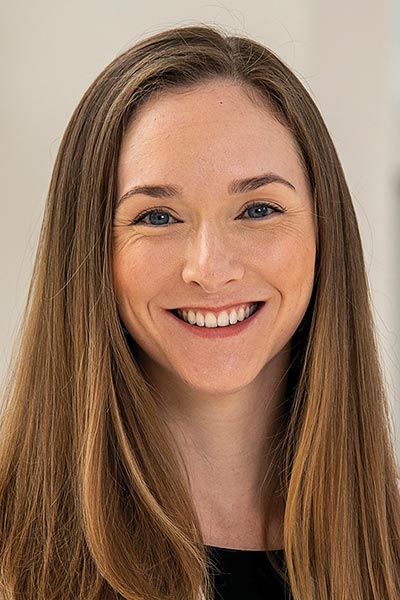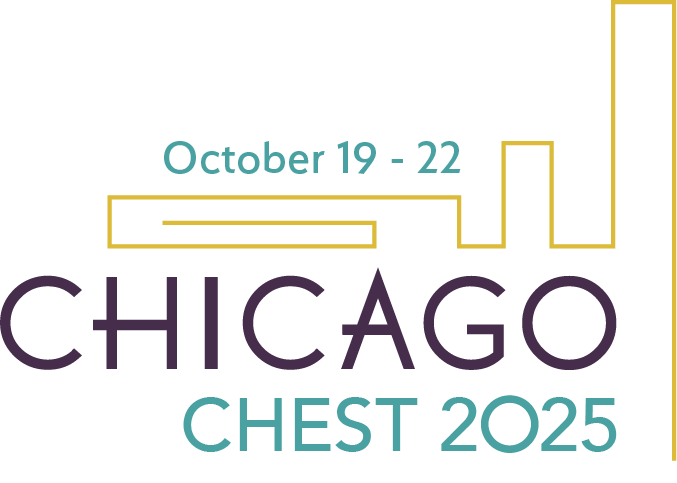COPD is one of the most prevalent yet underdiagnosed respiratory diseases. Research shows that two-thirds of patients with COPD miss the opportunity for an early diagnosis, often due to overlapping symptoms with other lung conditions, variability among individuals, and delayed symptom onset. Unfortunately, this delay can result in higher rates of exacerbation, increased comorbidities, and elevated health care costs compared with cases diagnosed early.
Recognizing these challenges, CHEST launched the Bridging Specialties®: Timely Diagnosis and Treatment for COPD program, an initiative focused on enhancing collaboration between primary care physicians (PCPs) and pulmonologists.

“We created a suite of educational materials to address learning objectives for both PCPs and pulmonologists,” said Steering Committee Chair, Megan Conroy, MD, MAEd, FCCP. “Our goal is to bridge the gap between primary and pulmonary care to improve patient outcomes.”
Closing the gap
Patients with COPD often first present their symptoms in primary care settings, where initial diagnosis and treatment are established. PCPs face the challenge of managing and diagnosing a wide range of diseases; given the complexity of COPD, this can lead to delayed referrals to pulmonologists, particularly for patients who fail to respond to first-line therapies.
“Our primary care colleagues are managing an incredible breadth of conditions while navigating high patient volumes,” Dr. Conroy said. “A close relationship between PCPs and pulmonologists ensures timely interventions and streamlines the transition of care for patients who need specialized treatment.”
Geography can also hinder access to pulmonology care, further underscoring the importance of an integrated approach. “When there’s a strong connection between PCPs and pulmonologists, it reduces delays in care and optimizes outcomes for patients,” Dr. Conroy said. That was why it was so important to have Nate Falk, MD, MBA, CPE, CAQSM, FAAFP, a family medicine physician, on the Bridging Specialties team. “It was critical to have a PCP’s perspective when developing these tools,” Dr. Conroy said.
Sharren Smith, MAHRD, Manager of e-Learning and Instructional Design at CHEST and the lead for the Bridging Specialties program, reinforced this sentiment. “It takes a medical team to walk a patient through their disease management,” she said. “The PCP often has an established relationship with the patient, which helps bridge the gap to pulmonology. These clinicians can improve outcomes and enhance quality of life for patients.”
Early diagnosis and treatment
While data on whether early diagnosis changes the long-term trajectory of COPD are limited, earlier detection and intervention can significantly reduce symptom burden. For instance, patients diagnosed early are more likely to participate in smoking cessation programs, which can mitigate symptom progression.
“Connecting patients to the correct diagnosis sooner decreases symptom burden and improves their quality of life,” Dr. Conroy said. “It’s all about timely interventions that make a meaningful difference.”
Clinician resources
To empower clinicians, the Bridging Specialties program offers an array of tools designed to streamline care and improve decision-making. The toolkit includes:
- Two self-paced e-learning modules on early detection and decision-making for COPD
- A CME-eligible interactive infographic summarizing COPD diagnosis and staging
- Podcasts exploring emerging treatment strategies
- Patient materials, such as a questionnaire and inhaler device guide in both English and Spanish
- Checklists and management guides to aid clinical workflows
These resources are tailored for busy PCPs and pulmonologists, providing concise, practical information to enhance care delivery. For example, the patient questionnaire helps PCPs identify potential COPD cases early and determine when a referral to a pulmonologist is warranted.
“This toolkit serves as an additional resource in clinicians’ toolboxes,” Dr. Conroy said. “It’s designed to help PCPs dive deeper into symptoms like shortness of breath and guide next steps for diagnosis and management.”
Impact on clinical practice
The Bridging Specialties toolkit has garnered positive feedback for its practical application in clinical settings. “Learners have praised its effectiveness in enhancing decision-making skills through interactive, scenario-based content,” said Martha Zaborowski Pascale, CPM, Director of Learning Products at CHEST. “It provides valuable insights into early diagnosis, treatment options, and strategies for managing disease progression.”
Specific areas where the toolkit has proven beneficial include refining prescreening processes, understanding lung volume reduction surgeries, and improving staging and management protocols. CHEST continues to gather user feedback to refine and expand the educational experience.
Accessing resources
Clinicians can access these resources through the Bridging Specialties section on CHEST’s website under Learning and Events. Additional content, including new podcasts, webinars, and e-learning modules for nontuberculous mycobacteria and bronchiectasis, will be available later this year.
Better patient outcomes
Dr. Conroy reflected on the personal fulfillment she’s found in this initiative: “Collaborating with colleagues across the country to develop these resources has been incredibly rewarding. They provide essential knowledge to help clinicians deliver the highest level of care to their patients.”
By bridging the gap between primary and pulmonary care, CHEST’s Bridging Specialties program is paving the way for earlier diagnoses, more effective treatments, and better outcomes for patients with COPD. This initiative exemplifies the power of collaboration and education in transforming the landscape of respiratory care.
CHEST gratefully acknowledges the following supporters of Bridging Specialties: Timely Diagnosis and Treatment for COPD.
Supported by Regeneron Pharmaceuticals Inc. and Sanofi
This article was originally published in the Spring 2025 issue of CHEST Physician.
